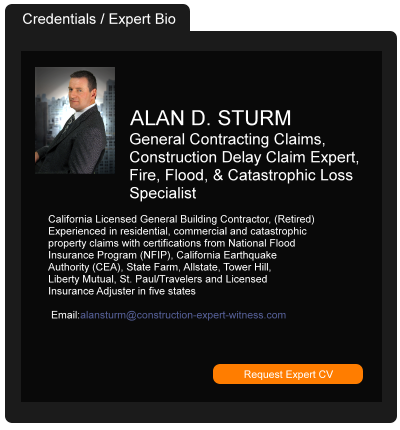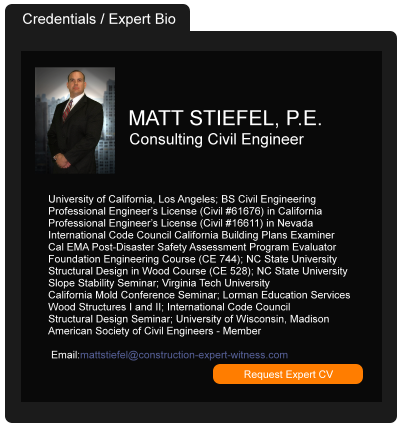Certified Question Asks Washington Supreme Court Whether Insurer is Bound by Contradictory Certificate of Insurance
January 21, 2019 —
Tred R. Eyerly - Insurance Law HawaiiThe Ninth Circuit certified a question to the Washington Supreme Court as follows:
Under Washington law, is an insurer bound by representations made by its authorized agent in a certificate of insurance with respect to a party's status as an additional insured under a policy issued by the insurer, when the certificate includes language disclaiming its authority and ability to expand coverage?
T-Mobile USA Inc. v. Selective Ins. Co lf Am., 2018 U.S. App. LEXIS 31863 (9th Cir. Nov. 9, 2018).
In 2010, T-Mobile entered into a Field Services Agreement (FSA) with Innovative Engineering, Inc. under which Innovative would provide services in connection with the construction of rooftop cellular antennae towers in New York City. The FSA required Innovative to maintain general liability insurance naming T-Mobile as an additional insured, and required that Innovative provide T-Mobile with certificates of insurance documenting the coverage. Innovative obtained coverage from Selective Insurance Company of America.
Read the court decisionRead the full story...Reprinted courtesy of
Tred R. Eyerly, Damon Key Leong Kupchak HastertMr. Eyerly may be contacted at
te@hawaiilawyer.com
Connecticut Appellate Court Breaks New Ground on Policy Exhaustion
April 26, 2021 —
Eric B. Hermanson & Austin D. Moody - White and WilliamsThe Connecticut Appellate Court recently issued a wide-ranging opinion, Continental Casualty Co. v. Rohr, Inc.,[1] which significantly extended the current restrictive view on when a general liability policy can be considered exhausted so as to trigger overlying excess coverage. The case marks a further step away from Judge Augustus Hand’s almost-century-old ruling in Zeig v. Massachusetts Bonding & Ins. Co.,[2] which held that an underlying policy could be “exhausted” by a below-limits settlement as long as the insured was willing to “fill the gap” between the settlement amount and the limits of the policy.[3]
In recent years, courts in California and elsewhere have increasingly walked back Zeig’s broad ruling – holding in Qualcomm v. Certain Underwriters,[4] for example, that an insured’s below-limits settlement with primary carriers does not exhaust the limits of primary coverage, or allow the insured to access overlying excess coverage.[5]
Reprinted courtesy of
Eric B. Hermanson, White and Williams and
Austin D. Moody, White and Williams
Mr. Hermanson may be contacted at hermansone@whiteandwilliams.com
Mr. Moody may be contacted at moodya@whiteandwilliams.com
Read the court decisionRead the full story...Reprinted courtesy of
Utah Supreme Court Allows Citizens to Block Real Estate Development Project by Voter Referendum
June 10, 2019 —
Sean M. Mosman & Mark O. Morris - Snell & Wilmer Under ConstructionThe Utah Supreme Court recently decided Baker v. Carlson, 2018 UT 59, which considered a developer’s ongoing effort to build a mixed-use, part-residential and part-commercial development on the site of the long-defunct Cottonwood Mall located in Holladay, Utah. On November 28, 2018, the Supreme Court affirmed the Third District Court’s ruling that a voter referendum to block the development was valid. This ruling calls into question the certainty of investment-backed real estate decisions in Utah and thus could carry negative implications for the Utah construction and real estate development communities.
The Cottonwood Mall opened in the early 1960s, and for several decades was a popular regional shopping destination. But the mall fell on financial hard times in the mid-1990s, and since 2007 the 57-acre lot has sat vacant. Around that time, the owner of the lot made plans to redevelop it, and asked Holladay City to rezone the site to permit mixed uses. In response, the City rezoned the lot as Regional/Mixed-Use (R/M-U). The City also created a process to control the development of an R/M-U zone, requiring prospective builders to first submit a site development master plan—which sets forth guidelines for the overall development and design of the site—to the City for approval. After the City approves a master plan, the developer must enter into a development agreement with the City, giving the developer certain rights and addressing other development-related issues.
Reprinted courtesy of
Sean M. Mosman, Snell & Wilmer and
Mark O. Morris, Snell & Wilmer
Mr. Mosman may be contacted at smosman@swlaw.com
Mr. Morris may be contacted at mmorris@swlaw.com
Read the court decisionRead the full story...Reprinted courtesy of
Avoiding Project Planning Disasters: How to Spot Problem Projects
December 13, 2021 —
James T. Dixon - Construction ExecutiveThe burden of project planning falls first and foremost upon a project owner. Owners have varying levels of sophistication, and the smart ones fill weak spots on their staff by engaging project managers, construction managers and owner’s representatives.
Typically, the owner then delegates the largest part of the project’s plan to the contractor in terms of creation and execution of a critical path method schedule during the construction phase. Before accepting that burden, a wise contractor will evaluate the project to determine if it is on a path to success or disaster. It is guaranteed that an owner’s problems will become the contractor’s problems in one way or another.
There are legendary projects that were also legendary planning failures. The iconic Sydney Opera House is one. The design competition began in 1955. After selecting the architect, the owner implemented a team that involved that architect, a structural engineer and an executive committee of inexperienced politicians. The original plan included a budget of $7 million (Australian) and a completion schedule spread over four years. That executive committee forced the project to start before designs were complete, doubled the number of theaters and then put a strangle-hold on the payment process, eventually causing the architect to quit and return to Europe with the construction drawings. The Opera House opened for its first performance in 1973—14 years late and $98 million over budget.
Reprinted courtesy of
James T. Dixon, Construction Executive, a publication of Associated Builders and Contractors. All rights reserved.
Read the court decisionRead the full story...Reprinted courtesy of
DA’s Office Checking Workers Comp Compliance
February 10, 2012 —
CDJ STAFFThe San Bernardino office of the California District Attorney is partnering with the California Contractor’s State License Board to check if subcontractors are holding the required workers compensation insurance. The High Desert Daily Press reports that the process of checking at sites has been going on for several months.
� Investigators visit sites and ask supervisors to provide a list of subcontractors which the state then checks for compliance. One worker was quoted that insurance inspections were so rare that he had never seen one before, despite 20 years in construction.
� On one day, investigators in two teams visited fourteen construction sites and reviewed the insurance status of twenty-two firms. Three were found out of compliance and stop work orders were issued.
Read the full story…
Read the court decisionRead the full story...Reprinted courtesy of
As Some States Use the Clean Water Act to Delay Energy Projects, EPA Issues New CWA 401 Guidance
August 26, 2019 —
Anthony B. Cavender - Gravel2GavelIn just the past few weeks, three states have used their Clean Water Act 401 authority to delay, for an indefinite period, FERC-authorized pipeline expansion projects. On May 6, 2019, the Oregon Department of Environmental Quality denied, without prejudice, Jordan Cove’s application for a Section 401 water quality certification. Jordan Cove plans to build an LNG export terminal at Coos Bay, Oregon, if it can obtain the necessary federal and permits. Under Section 401(a) of the Clean Water Act, any applicant for a federal permit to conduct any activity, including the operation of facilities which may result in any discharge into the navigable waters, shall provide the permitting agency a certification from the State in which the discharge may originate that any such discharge will comply with the applicable provisions of the Clean Water Act, including effluent limitations and state water quality standards. The States have a “reasonable time”—which shall not exceed one year after the receipt of the 401 application—in which to act, or the state’s authority may be waived by this inaction. The Oregon DEQ concluded that Jordan Cove has not demonstrated that its project, as presently configured, will satisfy state water quality standards. The 401 applications submitted by Transcontinental Gas Pipe Line Co. (Transco) to the New Jersey Department of Environmental Protection and the New York State Department of Environmental Protection were similarly rejected without prejudice on May 15, 2019 (New York) and June 5, 2019 (New Jersey). This use of the states’ 401 authority has frustrated plans to build and operate LNG pipelines around the country.
Read the court decisionRead the full story...Reprinted courtesy of
Anthony B. Cavender, PillsburyMr. Cavender may be contacted at
anthony.cavender@pillsburylaw.com
Real Case, Real Lessons: Understanding Builders’ Risk Insurance Limits
August 12, 2024 —
David McLain - Higgins, Hopkins, McLain & Roswell, LLCIn the recent case of 5333 Mattress King LLC v. Hanover Insurance Company, the United States District Court for the District of Colorado provided significant insights into the limits of builders’ risk insurance policies. Mattress King LLC, a warehouse owner, faced a substantial loss when a subcontractor drove a crane over and damaged the warehouse’s concrete floor slab during construction. Despite having a builders’ risk insurance policy with Hanover Insurance Company, coverage was denied, leading to litigation.
Applicable Policy Provisions
The policy in question was a Commercial Marine/Commercial Lines Builders’ Risk insurance policy. Builders’ risk insurance is designed to cover direct physical loss to covered property during construction unless the loss is excluded or limited by the policy. Key exclusions of the policy at issue included losses caused by faulty, inadequate, or defective:
- Planning, zoning, surveying, or development
- Design, specifications, workmanship, repair, construction, renovation, remodeling, grading, or compaction
- Materials used in construction or renovation
- Maintenance of the covered property
Read the court decisionRead the full story...Reprinted courtesy of
David McLain, Higgins, Hopkins, McLain & Roswell, LLCMr. McLain may be contacted at
mclain@hhmrlaw.com
Electronic Signatures On Contracts: Are They Truly Compliant?
April 10, 2023 —
Rebecca S. Glos - ConsensusDocsElectronic Signatures On Contracts: Are They Truly Compliant
As companies move to work-from-home situations in the wake of the COVID-19 pandemic, the issue of whether electronic signatures are legally recognized becomes more relevant. For many platforms, an electronic signature merely requires logging in, clicking a button, or typing your name. This process, which replaces the mighty pen and quill, is so effortless that oftentimes an electronic signature may feel like it does not carry the same weight as a handwritten signature. Thus, the question that we should be asking ourselves is whether the law recognizes this type of signature as being valid? Additionally, if electronic signatures are, indeed, valid, are there exceptions on whether they can be used?
Difference Between “Electronic” And “Digital” Signatures
Before delving into this issue, an understanding of some related terms may be helpful. In basic terms, an electronic signature (or “e-signature”) is any signature created or captured through a computer or other electronic device. Electronic signatures can include touch-sensitive screens where you use your finger or a stylus to sign your name as you would on a paper document. Electronic signatures can also include forms where you merely type in your name and perhaps other identifying information, then check a box stating that you intend to sign the document. They cover the full range of technologies and solutions to create signatures electronically such as:
- Clicking “I Agree” on a website;
- Signing with your finger on a mobile device;
- Typing your name or PIN into an online form; or
- Using e-signature software
Read the court decisionRead the full story...Reprinted courtesy of
Rebecca S. Glos, Watt, Tieder, Hoffar, & Fitzgerald, LLP (ConsensusDocs)Ms. Glos may be contacted at
rglos@watttieder.com


































































